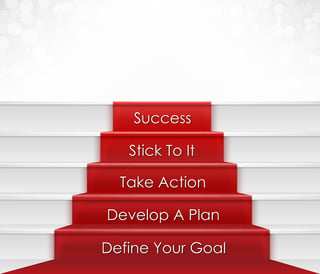It’s common sense. We only have one chance to make an impression, not only with our clients, but with our team members, as well. Rob breaks it down by using TLC. We teach, we lead by example, we coach by giving positive reinforcement. Most people want to do a great job so let’s help them be successful.
Sit down and develop SMARTER goals to help your team:
S – Specific
What does success look like?
M - Measurable
How are we keeping score?
A - Agreed on
Both come together and agree on the goals.
R – Relevant
Goals need to tie into vison and mission.
T – Timeline
Set hard dates, not three months out or next quarter.
E – Enjoyable
Employees walk out of the meeting excited about delivering these goals.
R - Rewarding
Team members appreciate working for the company and will be excited to contribute.
In leadership, you must stay calm, especially in times of distress. As a leader, it’s important to specifically focus on the moment of choice between stimulus and response. Rob discusses an equation to help understand this as E+R=O.
Event + Response = Outcome
The event could be a long-term employee giving her notice and moving or a snowstorm that will affect delivery of your product. You can’t always plan for everything, but you have to take responsibility for your response.
Before you respond, ask yourself two questions:
- Will my response improve the situation; and
- Is this how I want to be remembered? You control the outcome by how you respond. Team members will remember if you stay calm, come up with viable solutions, and handle yourself professionally under stressful situations.
The Cost of Communication Breakdown
Think about what would happen in your own business if a client’s request for a specific machine part is manufactured with the wrong material or is off by a centimeter. Depending on the size of the order, it could cost you thousands or more. Not only does it affect your bottom line, lack of communication will hurt your public reputation if these problems aren’t corrected.
As word spreads, it will be difficult to recruit top-line employees and current employees will disengage when there’s poor communication from the top. According to the Gallup State of the American Workplace report from 2014, actively disengaged employees cost the U.S. $450 to $550 billion per year in lost productivity.
Lack of specificity in e-mails, long and unproductive meetings, distracted managers who don’t actively listen to their teams, not understanding different generations and how to communicate with each group are all different forms of poor communication. The results will leave teams stressed and disengaged; low morale will increase along with employee turnover.
So the next time you’re about to sit down and write an e-mail or goals for an employee, ask yourself:
"Am I being specific and could I write it SMARTER?"
About Rob Bell
 Rob began teaching his customer service and communication techniques early in his tenure as the Personnel Development and Education & Training Director for Dick’s Supermarkets, Inc. Drawing on 25+ years of experience in leadership roles, customer service, and training, Rob makes it simple, clear and FUN to improve customer service and gain leadership skills.
Rob began teaching his customer service and communication techniques early in his tenure as the Personnel Development and Education & Training Director for Dick’s Supermarkets, Inc. Drawing on 25+ years of experience in leadership roles, customer service, and training, Rob makes it simple, clear and FUN to improve customer service and gain leadership skills.
Before becoming Dick’s Supermarkets’ go-to-guy for training, Rob worked as the accounting manager for a large trucking company, an auditor, and an adjunct instructor at the University of Wisconsin – Platteville. Rob now tours the country teaching the principles that have helped hundreds of companies and organizations improve their communication strategies.
Source:





